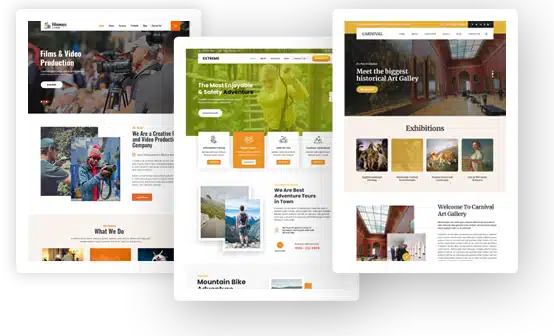How to Build a Personal Website as a Student That Stands Out to Employers

You are reading this article because you are a student and interested in the topic of personal website creation. We are sure that you want to learn how to create cool Internet projects and, what is no less important, to understand how to make them stand out to employers.
Today, you can find millions of articles and materials on website creation on the Internet, and we understand your confusion: what to read, what to believe, where to start, where to end… There are a lot of questions.
Of course, to begin with, you should understand that creating a website will take you a lot of time. As you know, students don’t have much of it. But don’t worry. You can delegate some of your tasks to a writing essays service that will help you quickly. This way, you don’t have to worry about your assignments and can fully immerse yourself in the world of creating your personal website.
Two key concepts
Since website development is a complex process, students must clearly understand what the first steps should be.
The first thing to do is to realize that websites are based on three “pillars”: design (UX/UI design or web design), the visible part in the browser (frontend), and the invisible part – programming or development of functionality (backend). Accordingly, in order to engage in a full cycle of work, you need to master three areas of work (ideally).
Knowing how to work in Figma will make you a web designer. You will be designing the future personal website. Knowledge of HTML, CSS, and JavaScript will make you a so-called frontend developer. Such a specialist is responsible for the appearance of the project.
The third (and last) type of specialists is backend developers. Their task is to program the functionality, capabilities, and interactions that most often remain “behind the scenes” for the average website visitor. Backend programmers must understand the main programming languages: PHP, Ruby, Python, etc. (as a rule, programmers are fluent in one language).
Do you really need to know so much?
Not really. It is very difficult to find a specialist who is equally proficient in web design and frontend and backend development. However, despite this, both the first and the second can create websites independently.
Choosing the best Webflow development company can make all the difference in creating a stunning, functional website that aligns with your goals. Whether you’re aiming to captivate visitors with sleek design, implement advanced features, or ensure seamless usability, the right team will bring your vision to life.
The difference, as you understand, is only in one thing: frontend specialists’ projects look more beautiful, and backend specialists’ websites are more “functional.”
We recommend you start with web design or UX/UI design, as it is closer to what we see on a daily basis. You will understand the result of your work; it is easy to see. After you master web design, you can turn to the frontend or backend to deepen your knowledge in the field of development.
Content Management System (CMS)
Actually, without special knowledge of programming, you can create functional and powerful websites. All this is possible thanks to the so-called Content Management Systems or simply – CMS. Often, management systems are also called “admin panels.”
CMS is developed by backend developers to simplify both their work and the work of the frontend. Without going into details, we can say that CMS is a pre-programmed functionality that is used to create websites. The convenience of management systems is that all this functionality does not need to be programmed – it is ready in advance and can be installed with a couple of mouse clicks.
Feedback forms, the ability to order in online stores, the formation of dynamic and drop-down menus, cropping images, and much more are all possible with the help of CMS.
We think many of you have heard the names of these management systems. The most popular are WordPress, Shopify, Joomla, DLE, Opencart, Bitrix, Drupal, Netcat, and Prestashop. Each of them is designed for a specific functionality. Some are for regular sites, some are for online stores, and some are for blogs.
What should you be able to do?
As we wrote earlier, we recommend that all beginners learn web design (UX/UI design). Using the capabilities of modern tools such as Webflow or Framer, you can make websites even without knowing the code.
Web design is created in Figma, and layout is done using lightweight “languages” HTML, CSS, JavaScript (JS), or tools such as Webflow and Framer.
Having mastered these skills, you can create excellent web applications. Knowledge of the backend will help you understand how the functions of your site (set using the CMS) work, but at first, it is not at all necessary to “dive” into this area.

